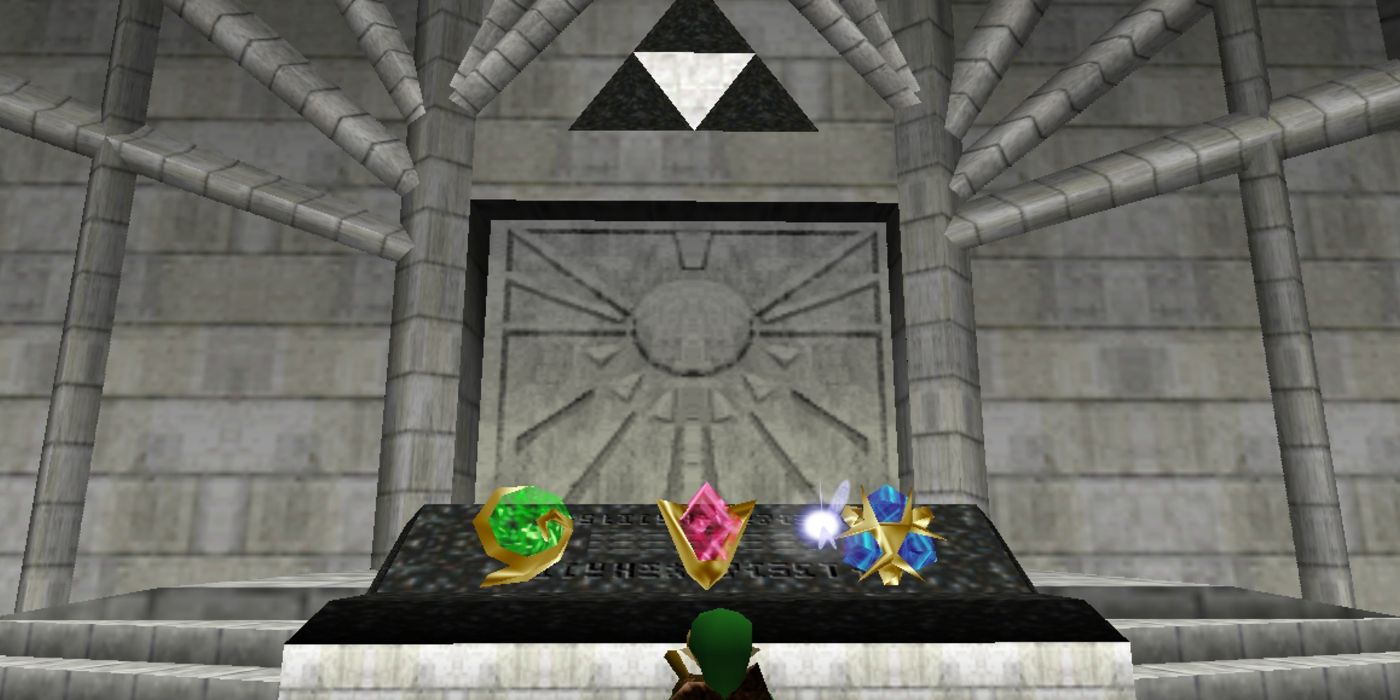Table of Contents Show
There is something to be said about a game that is capable of invoking a feeling of nostalgia when you’ve never actually played it before. I personally only had the opportunity to experience what is considered one of the best games of all time a little over a year ago after significant prodding from friends — I had never played any of the “Zelda” titles until recently, and so I never had any childhood association with the series. And yet, it still brought back feelings of remembrance, exploration, wonder.
From the musical score to the gameplay mechanics to the very carefully designed world, the beginning portions of the game reeks of, well, childhood. It felt not so much like a game I had already played or an experience I had already undertaken, but of a screenshot of a state of being. Right up until the game pulls the rug out from under the player in one of the most jarring scenes of tonal dissonance I’ve ever had the pleasure of experiencing in a video game before. Because that’s the beauty of Nintendo’s “Ocarina of Time:” it’s not just a game about childhood — it’s a game about growing up. Moreso than that, it’s not necessarily about the player growing up, but the story of a little boy without a fairy with a destiny etched in stone.
“The Legend of Zelda: Ocarina of Time” is Link’s story — a story about change and growth, for better or worse.
Link’s Role In “The Legend Of Zelda”
Link is an interesting character insofar that Link, often, has a very nebulously defined character. His entire design is meant to emulate a blank slate for the player to project onto to increase immersion into the game. That is the reason the base name for Link in the series is “Link,” because he is a literal link between the world of Hyrule and the player, according to series director Eiji Aonuma (( IUP. “1UP October 17th, 2007.” Zelda Dungeon Wiki, 17 Oct. 2007. )).
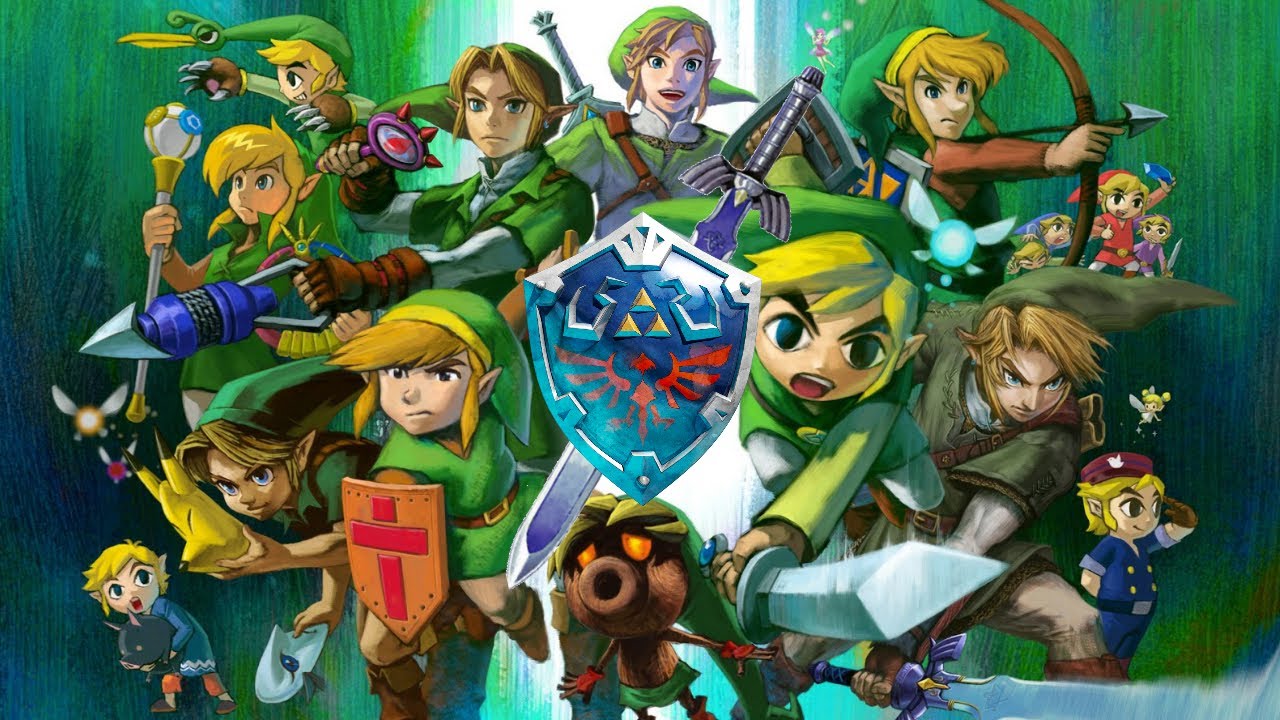
This makes Link’s status as an independent character nebulous at best because by nature he is what the player wants him to be. In “The Legend of Zelda” series, most games feature a different Link. Each and every Link has their own quirks — some Links have (non-voiced) dialogue options like “Breath of the Wild” (2016) Link, some Links are more expressive than others like the Link in “The Wind Waker” (2002), and some Links are more reserved, which does include the Link from “Ocarina of Time.” At their core, no one really knows who Link is.
That is to say, looking at Link’s evolution as a character in any game is ultimately what the player makes of him — everyone can view Link and his journey differently. That being said, however, as quiet and stoic as Link can be, Link does indeed have a definitive character arc in “Ocarina of Time” which is connected to the main themes of growth and change. More specifically, Link’s character arc has to do with growing up along with the trials and consequences that come with it, and the game masterfully reflects this through its framing and gameplay progression.
Childhood Games
Etherial lights dance around as children wander and play with their fairies in the Kokiri Forest, the first area in the game. Link’s home, without a doubt, invokes a sort of whimsy and carelessness that comes with exploring deep into the woods around one’s own neighborhood. You check under rocks for bugs and splash in cold streams and pluck grass from the ground to cover your friends in it, all the while staring up at the bright blue sky through the trees. Kokiri Forest is a place designed for kids, which works out stunningly considering the inhabitants, the Kokiri, are eternally bound to both the forest and their youth — they can’t leave, and they can’t age.
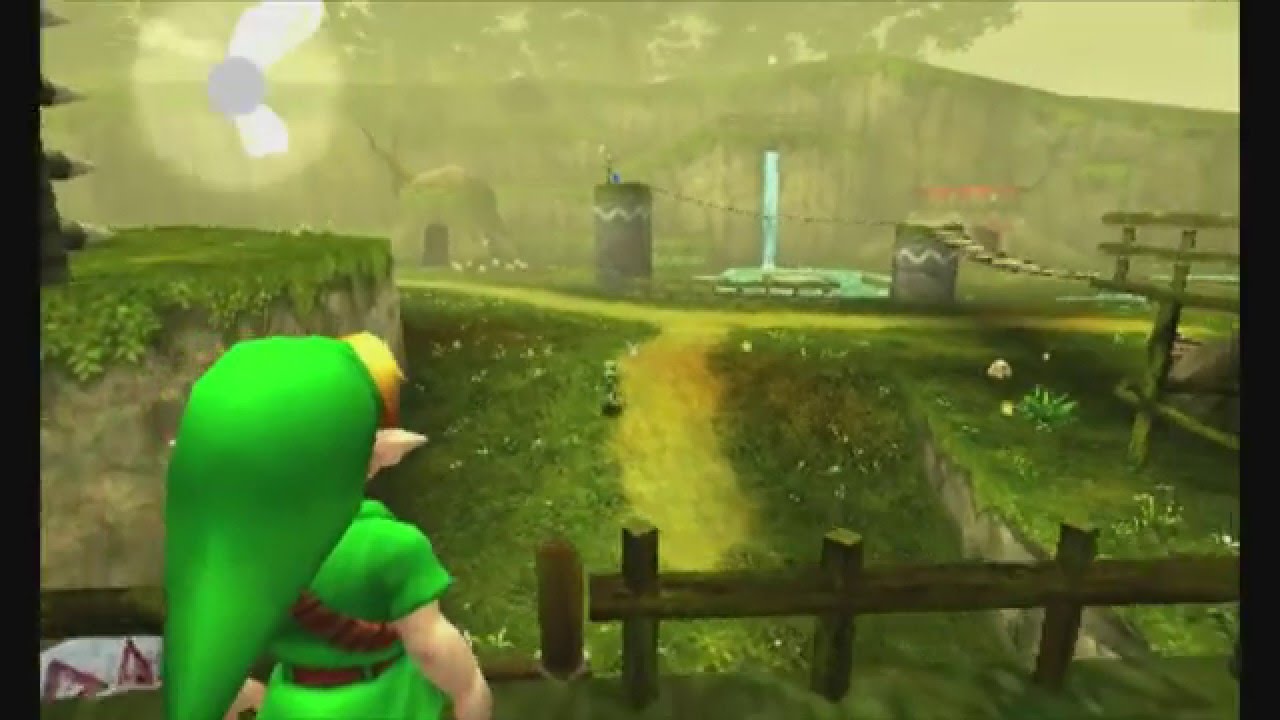
Link, unsurprisingly, is the exception to this rule as he’s not a Kokiri but a Hylian, the dominant race in “The Legend of Zelda” that grows up just like normal humans do. Not only is Link Hylian, but he’s also the only one in the Kokiri Forest without a fairy, which is important to note because him gaining his fairy, Navi, is a signifier of his childish nature — a temporary state. While Link is tasked with leaving the forest after the death of the Great Deku Tree, Link firmly belongs to the forest and considers it his home, a fact compounded by the game returning Link and the player to his home in the Kokiri Forest when reopening the save file. His leaving and the death of the Kokiri’s protector does little to damper the tone of the game as lighthearted and fun — if anything, him leaving the forest is just the beginning of a brand new adventure.
Hyrule Field And Zelda
The expansive openness of Hyrule Field, with bright chimes and pumping trumpets , invokes the spirit of light-hearted adventure, which is what the first part of the game strives to invoke. Nintendo builds its entire game-making philosophy around the concept of fun, and one of the ways “The Legend of Zelda” supports this is through the music, which masterfully crafts the atmosphere to support immersion and encourage the player forward. Nothing in the early part of the game truly suggests danger. Excitement, perhaps, and thrill, but not danger.
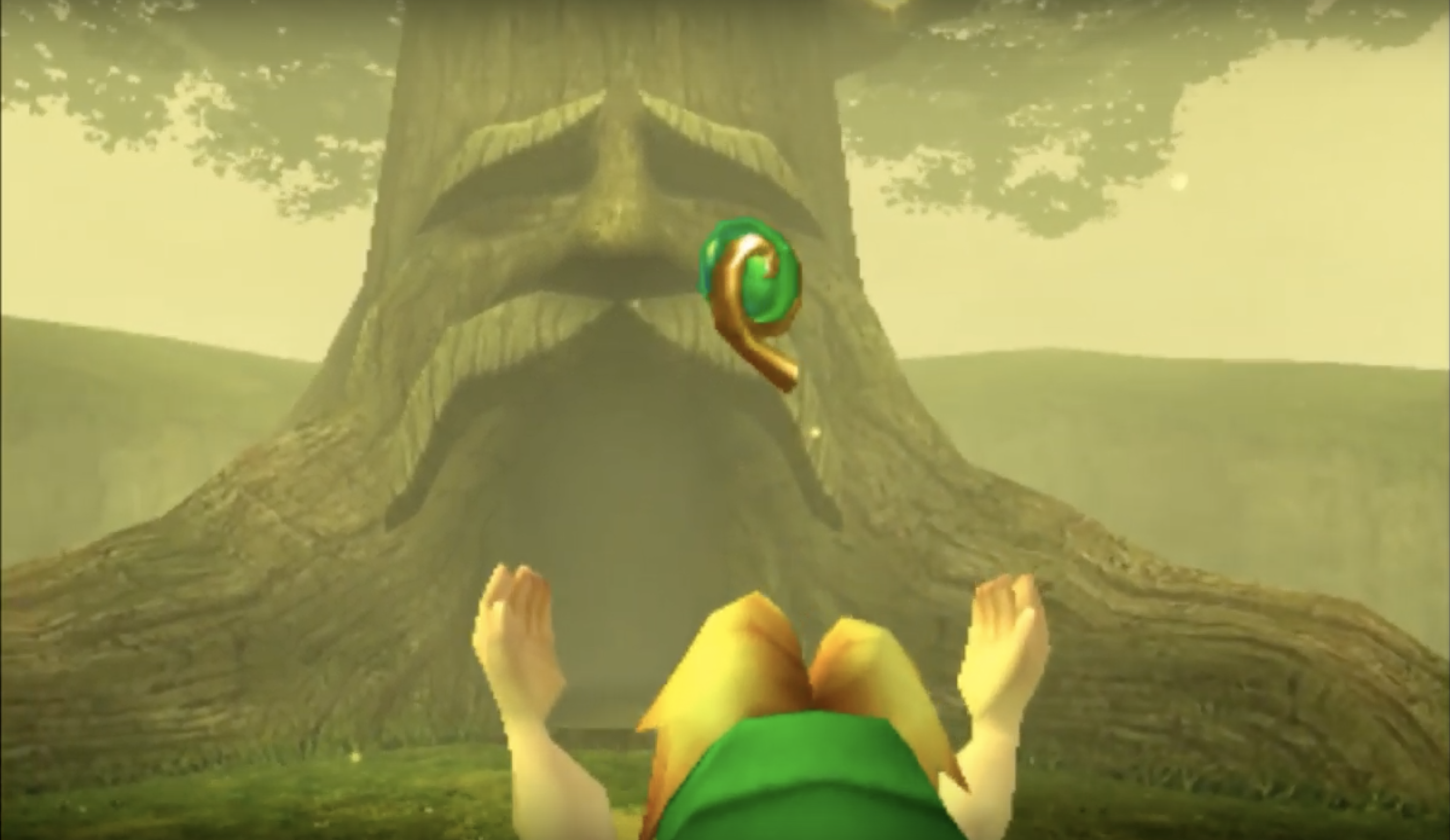
The main questline, given to Link by the Great Deku Tree and continued at Princess Zelda’s request, is to gather three Spiritual Stones to stop the game’s main antagonist, Ganondorf. The narrative framing of this portion of the game is to make the gathering of the Stones seem like a fetch quest more than anything else. Princess Zelda presents the quest to Link but makes note that not even her father believed her when she said Ganondorf was, is, a threat.
Link, however, shared the same prophetic dream Zelda and understands that Ganondorf is much, much more than he makes himself out to be. It’s with a child-like sense of duty that Link takes off to gather the Stones — a similar gravitas to when your parents or guardians let you go pick up snacks a few aisles over. Link, at this point, understands that there is a problem but is missing the entirety of the picture, and so is Zelda for that matter. There’s a sort of ignorance there, bravado, that only comes with, well, being a kid. He’s not ready to understand the full scope of the threat looming over Hyrule — he has to mature first.
The Goron And Zora
After the Kokiri Forest sets up the framework of adventure and Zelda encourages the outlook of simple errands, the tasks that Link undertakes in the Goron and Zora Domains enforce this mentality. Ganondorf acts through coercion rather than direct confrontation — he’s a threat, but not an immediate one nor a lethal one, which decreases the severity and weight of Link’s quests through them and allows them to remain the fetch quests that they are.
With the Goron, Link, using a song taught to him by his Kokiri friend Saria on one of his return trips to the Lost Woods, reignites the fire in the Goron Leader Darunia’s heart and obtains the tools to break into the first temple of the game to kill the creature overrunning the Goron harvest grounds. All things considered, Link isn’t really needed for much besides pulling Darunia out of his depression through Saria’s Song. This makes sense because Link, at the moment, isn’t quite yet capable of the feats he undertakes in later portions of the game. He’s just a kid on an errand, keeping in line with the feel of the rest of the early gameplay.
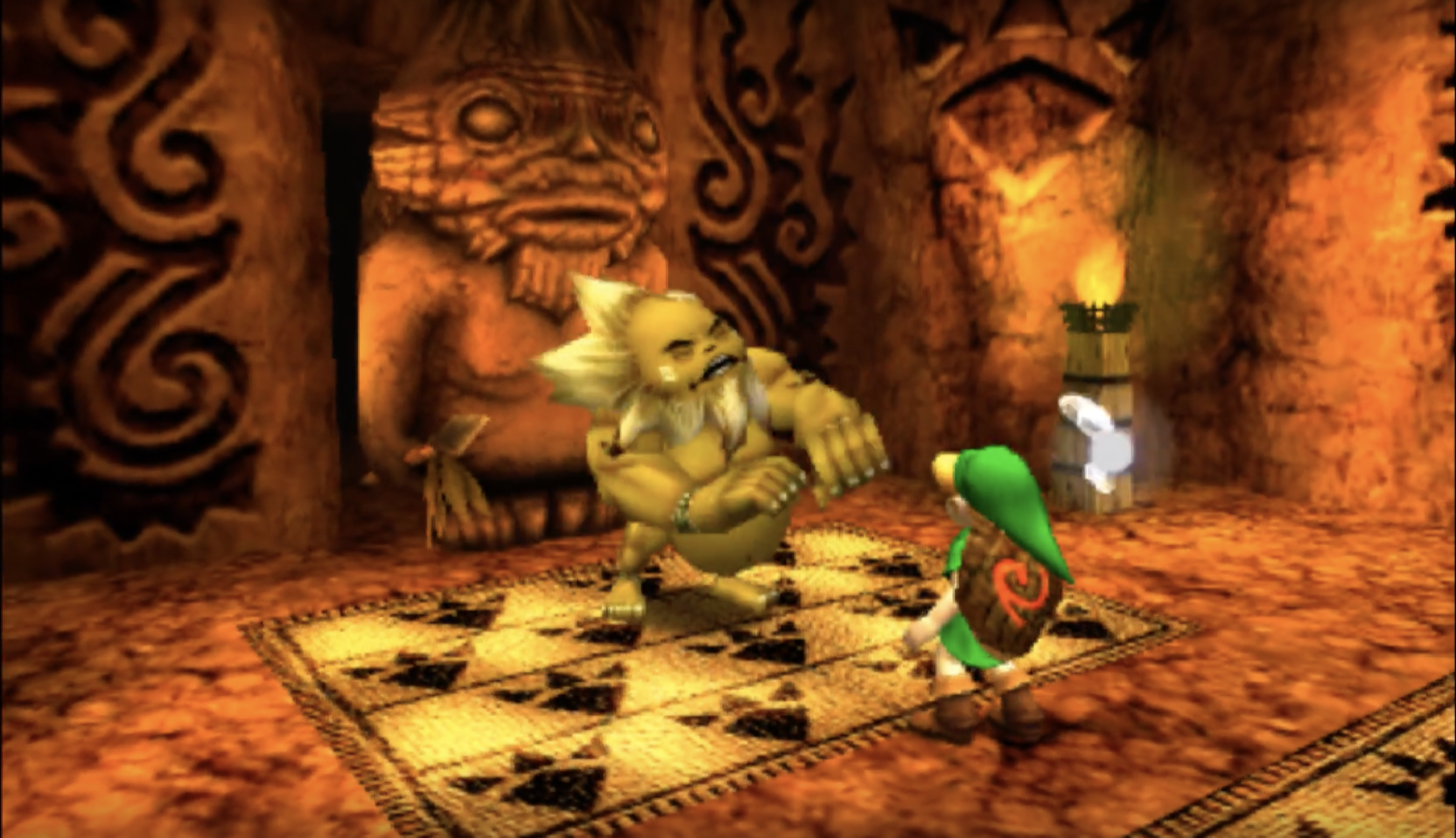
Similar circumstances apply to the second Domain Link visits. In Zora’s Domain, the protective being Jabu-Jabu has swallowed the Zora princess, Princess Ruto, and Link must enter the being to free her at the request of her father. Once Link gets inside of Jabu-Jabu and finds Ruto, both Link and the player learn that she regularly goes inside him and while Ganondorf has laid a sickness on the being, Ruto knows how to navigate Jabu-Jabu’s insides. While the situation isn’t great, much like the Goron’s issue, it’s less of a problem and more of a short-term inconvenience and could likely have been solved by their own people. Link, once again, simply needs something from them and does a favor in return. (( Glink, director. The Deeper Meaning Within Zelda: Ocarina of Time [Memory Card]. YouTube, Glink, 24 Mar. 2017. )).
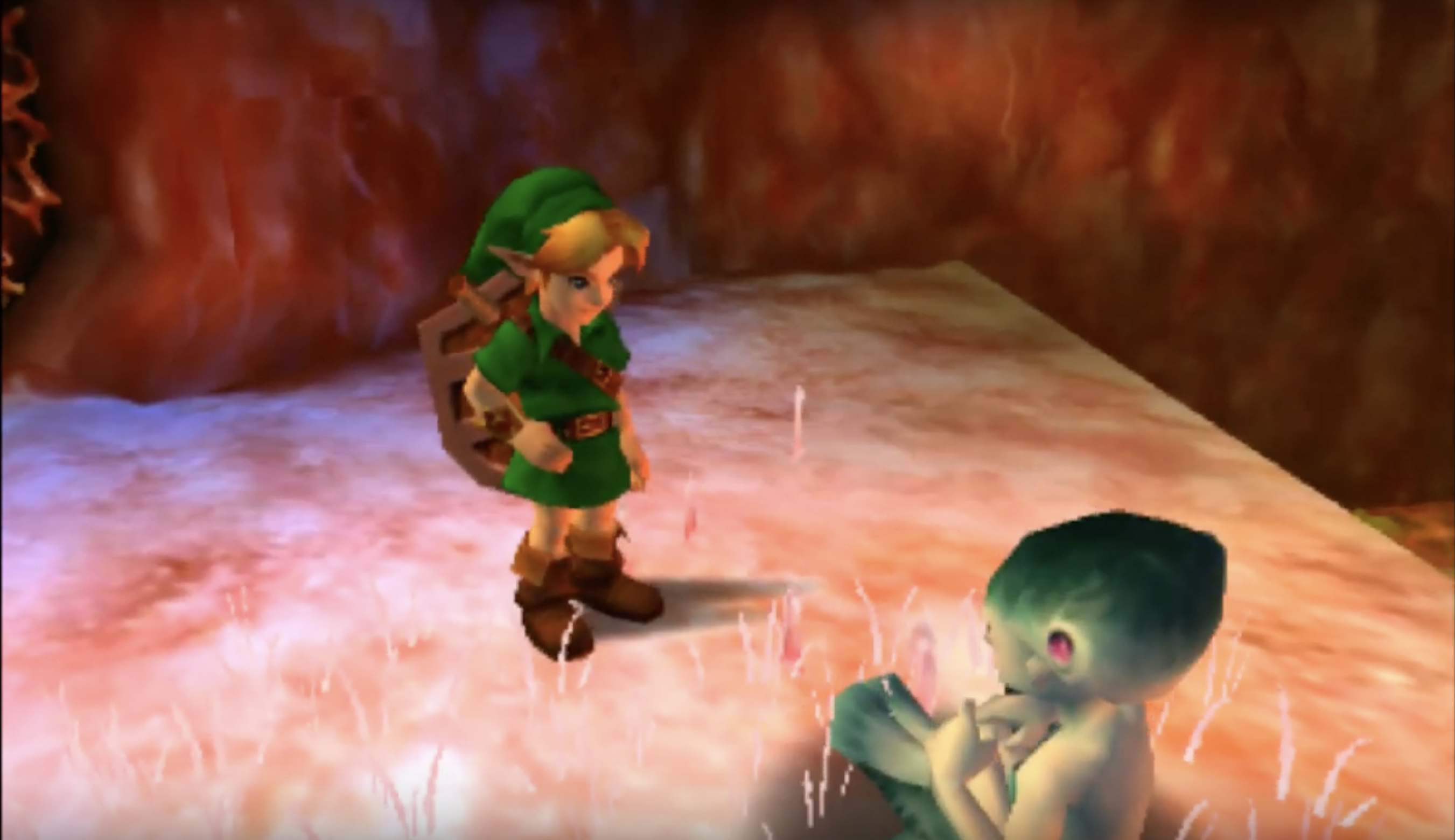
The problems are simple, the temples are simple, the bosses are simple. The first half of the game is simple, entertaining, and easy. Childhood, in a lot of ways, is easy. You run a few errands, you have a few problems like bowling ball-like dinosaurs trying to run you over and an octopus that also does the same, but in the end, they’re not deadly threats. Fight some monsters, solve some puzzles — the degree of risk is small enough to be negligible in the long run. Much like how things as a child often felt direr, more important than they really were, that is how the Goron and Zora Domains function for Link.
The moment Link returns to the Temple of Time with the Spiritual Stones and, just as Zelda told him, opens the Sacred Realm by pulling the Master Sword from its pedestal, that changes in an instant. While Link and Zelda were thinking they could save the world by running a few errands, Ganondorf let them, because it was never a game to him. The adult steps in and gets exactly what he wanted in the first place — power.
There are consequences.
Adult Responsibilities
The biggest tonal shift of “Ocarina of Time” and the harshest moment of realization for Link happens when the Sacred Realm is opened for the first time, and it’s emblematic of the stark transition between childhood and adulthood. In a flash of light, Link awakens seven years in the future, a grown adult in body but not in mind, and is told that Ganondorf won and that he rules over Hyrule with an iron fist. Sheik, a mysterious but knowledgable figure appears and tells Link that he is the only hope Hyrule has and that he must find the Sages of the Sacred Realm, assemble their powers, and defeat Ganondorf before he reassembles the pieces of the Triforce, which broke before he could fully use it.
He is told to first go to the Forest Temple where he’ll find a girl from his childhood. Imagine, for a moment, how confusing it would be to wake up seven years in the future with no recollection of the time you lost. Imagine being told that everything you knew and cared about was gone, and you are told, still reeling from the shock of literally everything happening to you, to go kill an all-powerful warlord who has been subjugating the lands — a warlord that you technically brought to power by running some errands. Link pulling the Master Sword from its pedestal represents a massive tonal shift that is first only told to the player and Link.
The immediate consequences of this action, realizing the passage of time and the effects it’s had, are, at least, manageable. Sheik tells Link there’s a friend waiting for him in the Forest Temple and since the Forest Temple is in the Lost Woods, it wouldn’t be unreasonable for Link to think the rest of the Kokiri are still in the village. There are some recognizable constants at first, but the tonal shift, the consequences of Link and Zelda’s “errands” and Link pulling the sword from the stone, hits like a freight train when Link leaves the protective bubble of the Temple of Time.
Recognizing The Consequences
The game gives you ample chance to experience the main hub Castle Town as a living, bustling place in high spirits, and the game uses seeing Castle Town again seven years later to impress the immensely different feel of the game from there on out. Castle Town was a safe space from the day-night cycle in Hyrule Field and the enemies that spawned. It burst to the brim with people to interact with, side-quests to tackle, and mini-games to play. It was alive, breathing, and an absolute delight to be in, matching the Kokiri Forest’s sense of wonder and whimsy full-force. The Castle Town Link walks out into is a nightmare.
Gnarled, dead trees replace the lively green as ominous clouds hover in a darkened sky. The living dead walk Castle Town’s destroyed cobblestone street. No music plays in the background, just the humming wind and shrieks of the damned when you step too close to a ReDead as it attempts to paralyze Link and maul him to death. Without experiencing Castle Town as it was, experiencing it seven years in the future wouldn’t have near the impact it does. The player and Link both come to care about Hyrule and its people, and it’s a direct consequence of his actions that it is the way it is now — ruined, lifeless (( Schaffrillas Productions, director. Ocarina of Time – 20 Years of Perfection. YouTube, Schaffrillas Productions, 21 Nov. 2018. )).
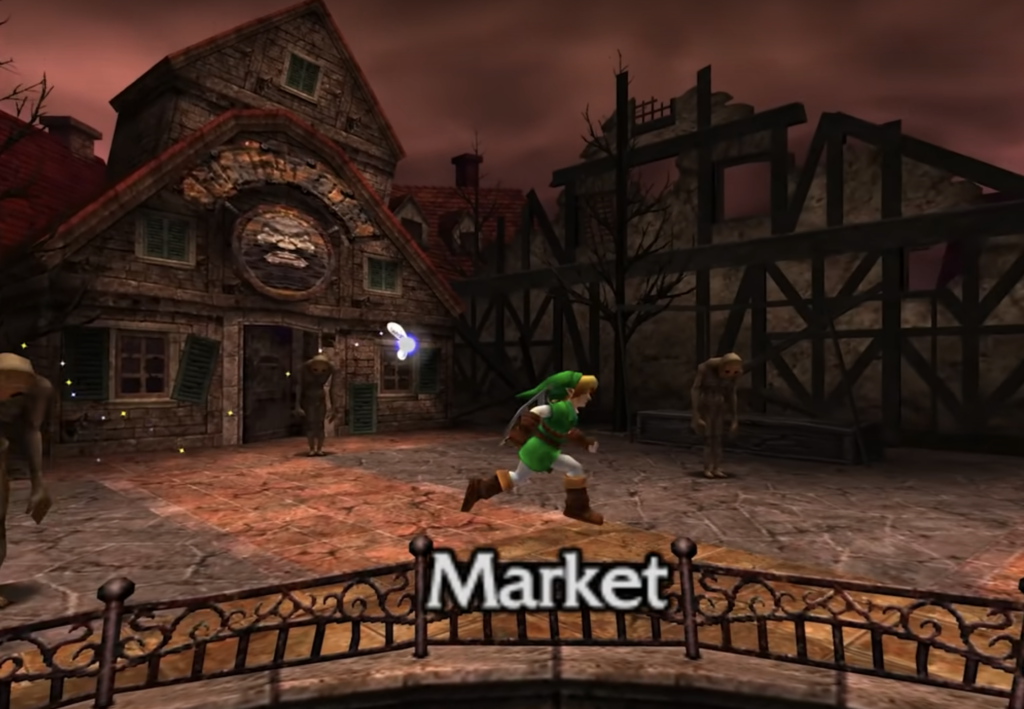
Whether Link is ready or not to face the world he now lives in doesn’t matter because it’s the world he and Zelda helped bring to fruition — if he doesn’t fix it, no one will. Aside from his fairy, Navi, whose guidance within the game is questionable at best from an outside perspective, the only help Link receives in this portion of the game is from Sheik, the lone Sheikah survivor who teaches Link songs to get into the temples to rescue the Sages and to help guide him to the next challenge. The Forest Temple, unfortunately, just serves as another rude awakening for Link.
Return To The Kokiri Forest
When Link first begins his adventure, it’s meant to be temporary. He borrowed the Kokiri Sword when he left the forest the first time and was supposed to only briefly borrow the Master Sword. The funny thing is, though, is that childhood itself is temporary — for Link, unfortunately, that idea takes itself to the extreme. From Link’s perspective, a few minutes ago he was Kokiri, albeit an odd one, with a home and friends. Going back to the Kokiri Forest seven years in Hyrule’s future, it looks exactly as it did before, a snapshot of life before Ganondorf took over.
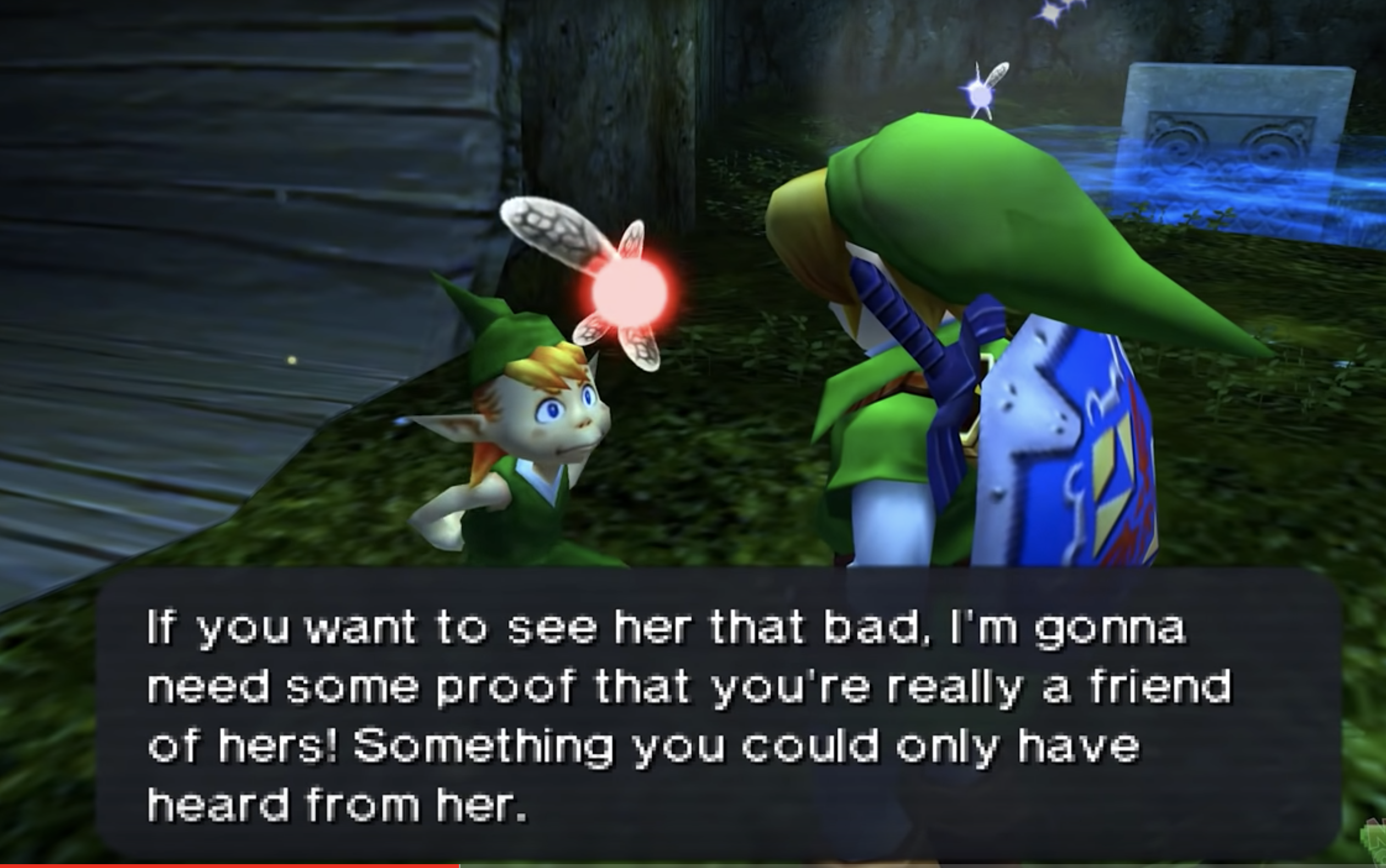
For Link, it could have been a merciful oasis in a series of very weird, very wrong experiences, but instead, he has to confront that though everything looks the same, that everything by all rights is the same, his friends and surrogate family have absolutely no idea who he is.
The first part of the series places significant emphasis on Link being a kid — this makes sense, all things considered, because he is, by all rights, a kid going off on an adventure given to him by the princess of the realm. There’s a lot to unpack there, but at the core of Link’s character at the start of the game, at the core of the game, is that Link is a kid. In an interview, Nintendo game director Shigeru Miyamoto explained that much of the inspiration for “The Legend of Zelda” series came from his explorations as a kid, wandering through the woods and surrounding lands to see what he could find for the sake of it (( Staff, NPR. “Q&A: Shigeru Miyamoto on the Origins of Nintendo’s Famous Characters.” NPR, NPR, 19 June 2015. )).
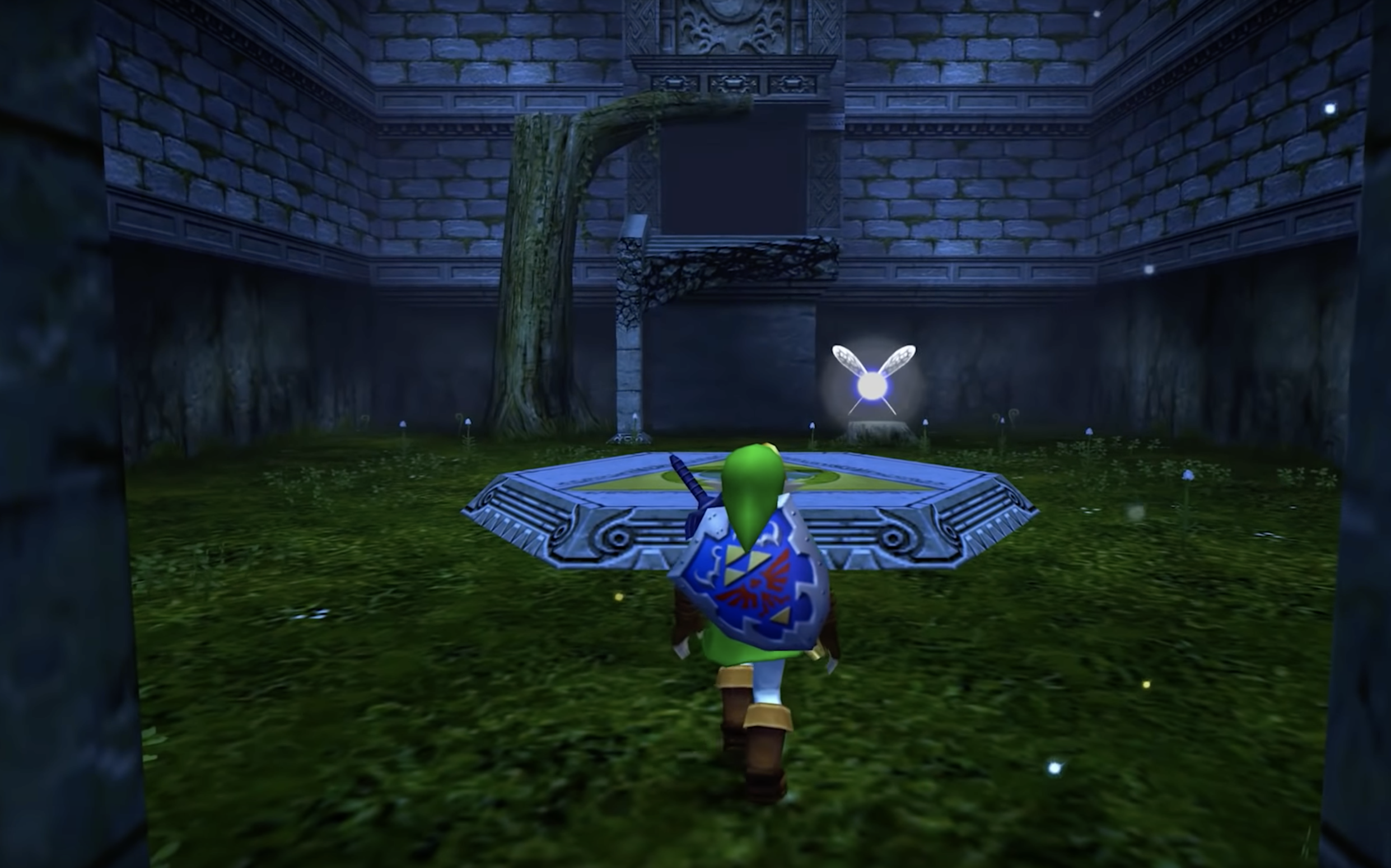
In a lot of ways, this reflects the early portions of “Ocarina of Time” as you and Link both find yourself in new lands, new places, meeting new people, and experiencing things for the first time. After Link awakens from his time in the Sacred Realm, though, there’s a haze that sits over Hyrule, and intrinsic melancholy that comes from knowing how things were, how things should be. People shouldn’t have seven years of their lives stolen in an instant, towns shouldn’t be burnt to rubble at all, and the blights inflicted on the Zora and Goron Domains are unnatural and upsettingly cruel (( Good Blood, director. OCARINA OF TIME – A Masterclass In Subtext. YouTube, Good Blood, 11 Jan. 2019. )). Link has to contend with the Hyrule he came to know, the Hyrule that was familiar and safe, is no longer either of those things by any metric, and Forest Temple is just one way the game imposes this on Link.
The Kokiri should know Link, but they don’t. Monsters swarm the area before the Forest Temple where before it was a serene clearing, and the stump where Saria played her own ocarina and taught Link Saria’s Song is empty. When Sheik reappears to teach Link a new song that will return him to the Forest Temple when he plays it, he imparts a handful of words to Link.
“The flow of time is always cruel… Its speed seems different for each person, but no one can change it… A thing that doesn’t change with time is a memory of younger days… In order to come back here again, play the Minuet of Forest.”
“Ocarina of Time.” Nintendo. 1998
It seems callous, almost, to tell Link there is no way to return to how things were, but continuing to act as a guiding figure to Link, Sheik reminds Link that if nothing else, Link can remember how things were. If he remembers, then he can remember the gravity of the situation and why Ganondorf needs to be stopped — there’s something to fight for if he remembers. Even if Link’s memories haven’t been corrupted, it’s the fact the last memories he has are ones captured by the eyes of a child — he has all the more reason to want to fix what Ganondorf’s wrought because the divide between past and future is infinitely more obvious than one who lived through the transition, both the passage of time and from one phase of life to the next.
Idyllic memories, however, do not change the fact that the Forest Temple is leagues above what Link experienced in his first journey through Hyrule, and definitely like nothing he’s ever seen in the Kokiri Forest before. The Temple is full of constantly respawning, aggressive enemies, unlike anything Link’s seen before. And, even with the harder enemies and the harder puzzles, at the end is a spectral copy of Ganondorf Link has to face to reach the Sage, a literal confrontation with what he’s wrought and a dangerous representation of Ganondorf seeing Link not as a kid, but as an adult — as a threat.
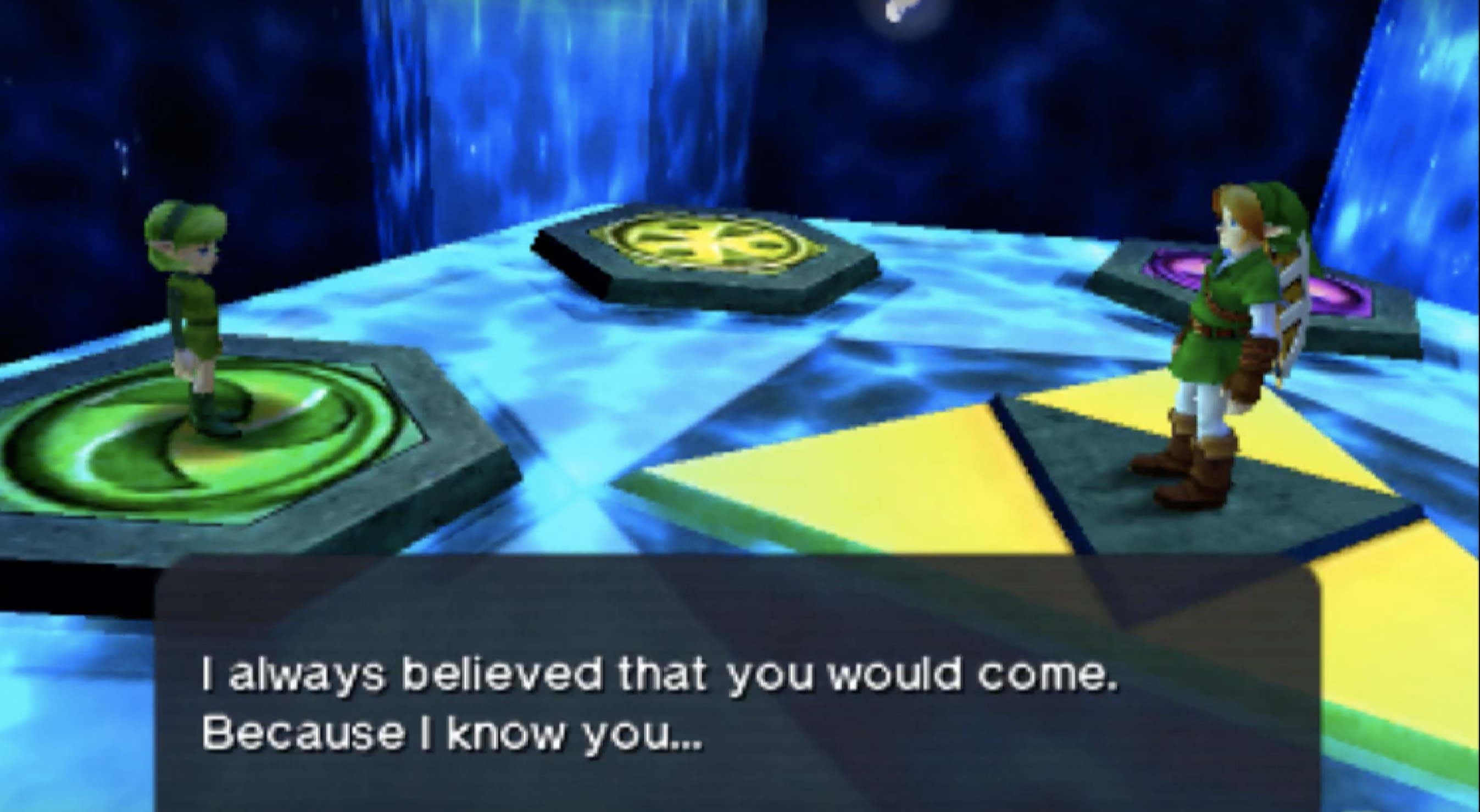
Once Link reaches the end, he finds the first person who’s recognized him who knew him before: Saria. Like the other Sages, though, she has to stay in the Sacred Realm once awakened, essentially deceased. Link’s closest childhood friend has to part ways with him forever. Link has only just started his journey in the changed Hyrule, but the game makes sure to note that slowly but surely, he must move away from the comforts and familiarity of his childhood to save Hyrule — to stop Ganondorf, he doesn’t have a choice.
The Liminal Space Between Growing Up And Being Grown
Ironically enough, and yet extremely fitting for the situation and the themes at hand, Link can return to his childhood. By reinserting the Master Sword in the Temple of Time, Link can travel seven years back to “past” Hyrule. In fact, in order to complete some sidequests and main questlines, this is a requirement. It doesn’t feel even remotely the same. The further Link traverses in the future, the more out of place the past feels — the more out of place it feels for him to be a child. Just as the characters initially point out Link as a child, they comment on his growth the more Sages he awakens, starting with Saria as the Forest Sage, who simply bridges the connection that Link is the same person she knew. The more characters comment on Link’s growth, the odder it is when he’s referred to as a child (( Good Blood, director. OCARINA OF TIME – A Masterclass In Subtext. YouTube, Good Blood, 11 Jan. 2019. )).
Facing Hyrule’s Worst
Link being able to revert to childhood is emblematic of the very clear message the game pushes: there is no way to truly return to childhood — you can only move forward. While reverting to childhood is necessary, once the Master Sword is drawn it’s hardly the most encompassing portion of the game — that all happens when Link is an “adult,” and it ramps up the game in every single way. The dungeons are more complex, even the optional one you can undergo as a child, the bosses more difficult, and overall harder to navigate. There’s a complete tonal shift regardless of which stage of life Link is in, and what’s even more interesting is that for much of it, it stays in the background, a constant reminder of the change that happened (( Riga, Mac, and Gayle. “Start: Select: Hope, Despair in ‘Ocarina of Time’.” The Hoya, The Hoya, 30 Apr. 2021. )). Even when Link is a child again, gone is the carefree feel of the first portion of the game because the sheer weight of the responsibility to save future Hyrule lingers with each interaction that takes place.
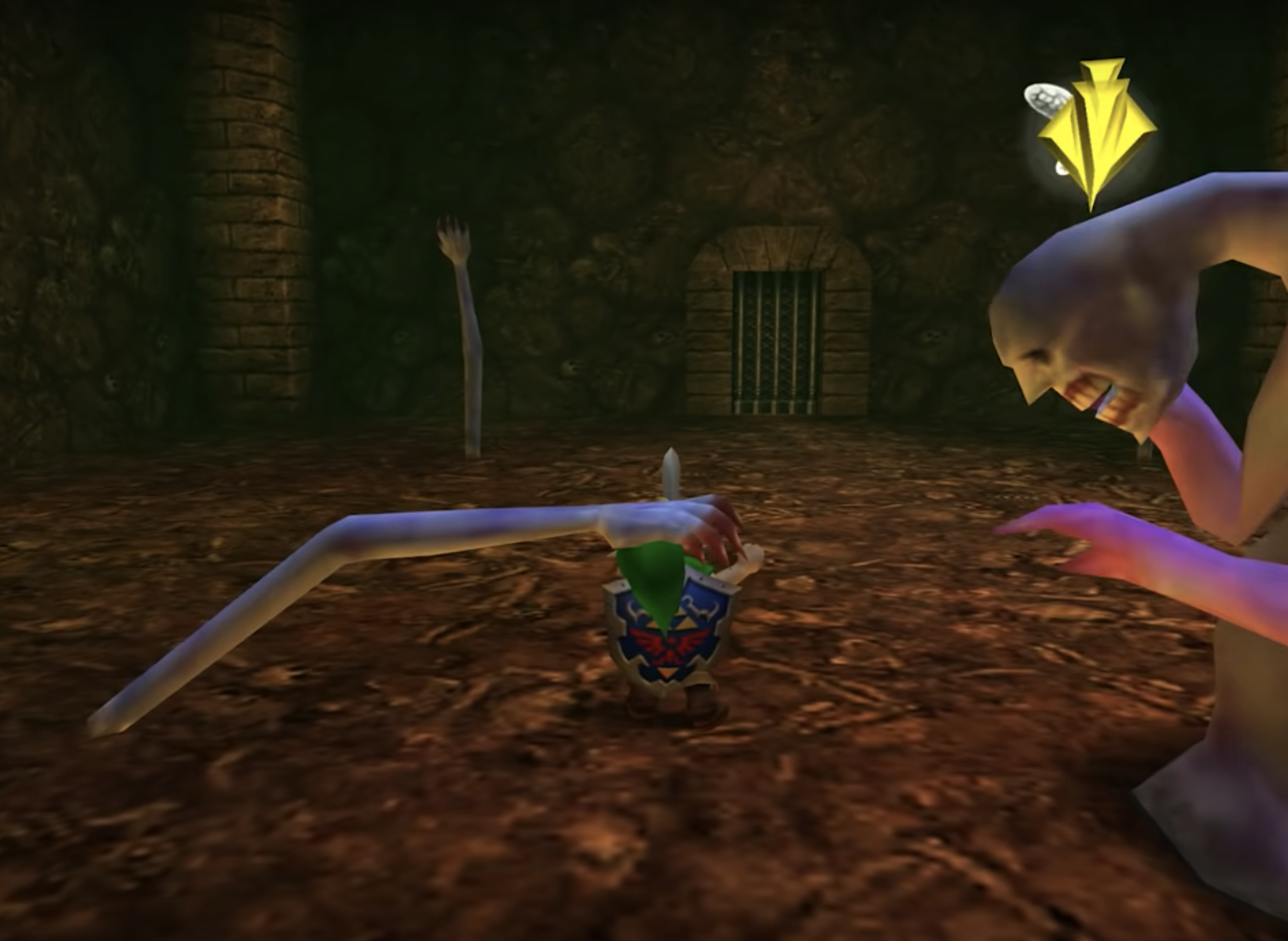
Link has to save the Gorons from being eaten by a resurrected dragon, free the Zora from an icy prison, face the literal darkness within himself, and face the sins of Hyrule, all while trying to awaken the Sages and stay alive in the process. Even “optional” trials, such as slaying the monster at the bottom of a cursed well in Kakariko Village come with heavy realizations about the dark underbelly of Hyrule and the evil it tries to bury and forget — it’s Link’s job to not only clean up the mess him and Zelda made with Ganondorf, but also to face horrifying truths and bear the burdens of people who came before him.
If Link was still a child after drawing the Master Sword and being flung into the future, by the time he regains the ability to return to his former state, less and less does that truth still apply. Link’s only option is to press on and, once he awakens the Sage of the Spirit Temple, all that’s left for him is to find the last Sage to bind their powers together. The last Sage is the one who guides Link, shows him how to enter the Temples, offers advice, and who acts as one of the very few grounding figures in Hyrule’s future. Sheik, who is a persona Princess Zelda adopts, is, along with Navi, Link’s singular constant. Considering how the game treats the transition between childhood and adulthood, it only makes sense that when Sheik reveals himself the holder of the last piece of the Triforce Ganondorf needs, Ganondorf captures Zelda, leaving Link to directly confront him.
What Does Winning Really Mean?
In the end, like the end of all journeys, Link has to face the monster waiting for him in the castle. Setting aside the “Zelda” series’ diverging timelines, the timeline that matters most is the one where Link defeats Ganondorf. Ganondorf, who still refers to Link as a kid and whose presence has loomed throughout the entire game, much like the tonal shift that occurred when Link drew the Master Sword (( Good Blood, director. OCARINA OF TIME – A Masterclass In Subtext. YouTube, Good Blood, 11 Jan. 2019. )). And of course, to finish the game and to finish his journey, Link has to beat Ganondorf. Against the might of a monster, Link draws his sword, slays the proverbial dragon, and rescues the princess from the castle.
Typically, this is the part of the story where the hero gets a reward for his troubles. It could be riches, it could be power, it could be peace. Link, unfortunately, gets none of this. Instead, Zelda gives Link the opportunity to travel back seven years and to end Ganondorf’s reign before it has a chance to start — properly, this time. It’s a point of duty, but it can also be viewed as Zelda genuinely trying to return what was stolen from Link. Zelda and Zelda as Sheik also had their childhoods stolen from them as a consequence of their actions. Training, running, fighting, and trying to stay alive long enough to see Link awaken and to guide him where he needed to go to kill Ganondorf once and for all — that was Zelda’s life for seven years. Who wouldn’t take the chance to go back and change it?
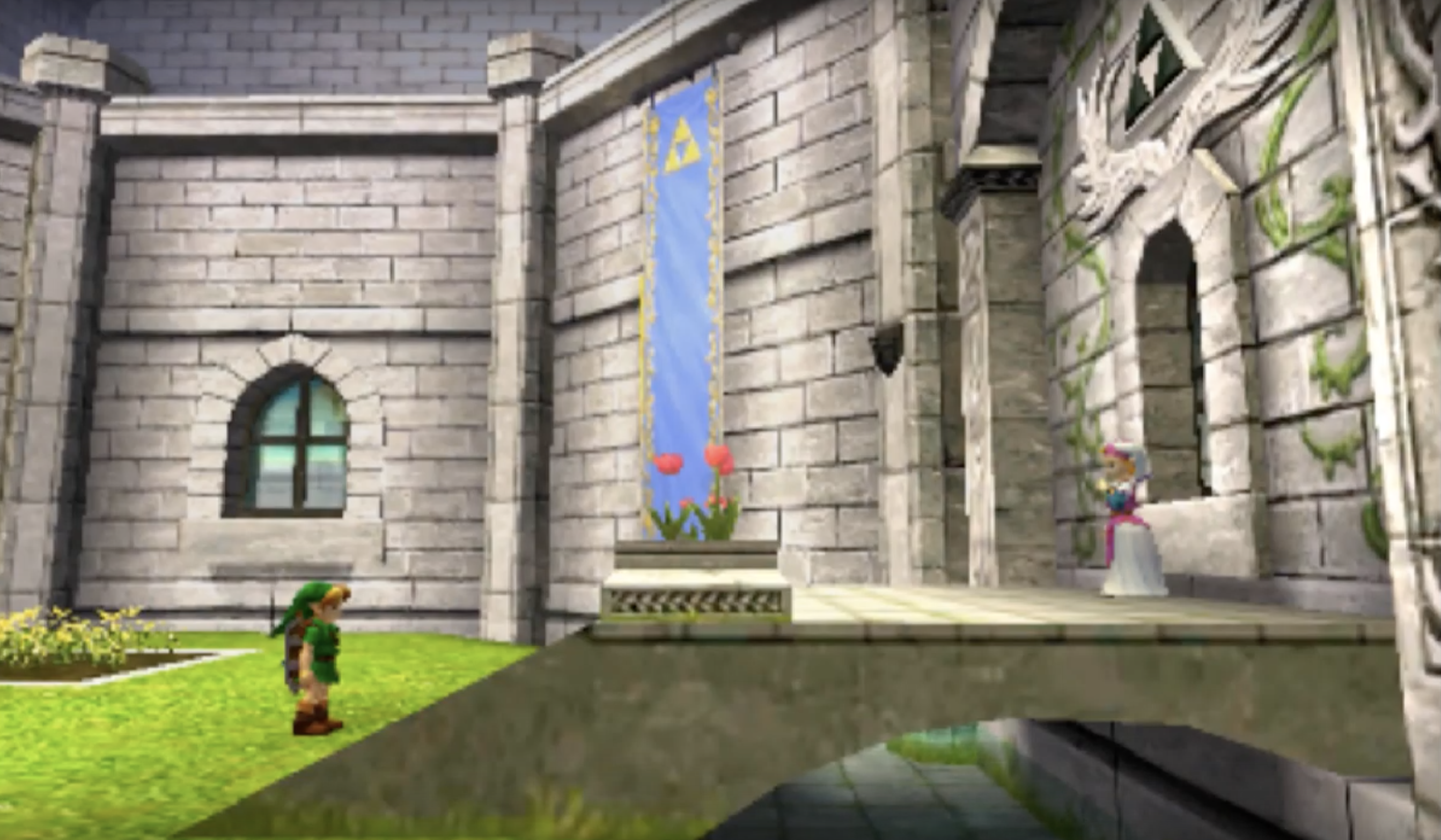
So, Link gets sent back to a time now foreign and a body that no longer fits the person he grew into as a reward. Perhaps in any other circumstance, it would have been a fitting gesture, but after seeing what Link faces and how he has to grow to rise to the challenge, it just seems cruel.
Sheik said it best: the flow of time is cruel, and there’s no fighting against that current. Link returns to the past is left behind by Navi, the one remaining thing that still marked him as belonging to the Kokiri, and is seen standing in front of Zelda, mirroring the first time he met her as a child. As the end credits show the people of Hyrule in the future celebrating Link’s accomplishments — something he never got to see for himself. It was a thankless job but someone had to do it, and in the end, isn’t that what adulthood is?
“Ocarina Of Time’s” Parting Thoughts
“Ocarina of Time” is truly a fantastic game and over twenty years later it’s no surprise people are still singing its praises. When paired with its sequel “Majora’s Mask” (2000), the narrative it weaves leaves the player with plenty to chew on. In the past year, I have dedicated more thoughts to this game than I probably should have, but that stands in tribute to the resonance “Ocarina of Time” has. Childhood for many exists in an idyllic, sacred space, but equally common are messy, confusing childhoods riddled with growing pains and hardships. “Ocarina of Time” manages to capture both, all while mourning the loss of those childhoods and acknowledging that growing up, in a lot of ways, really does hurt, even if that’s just life.
